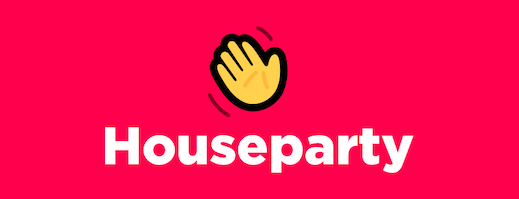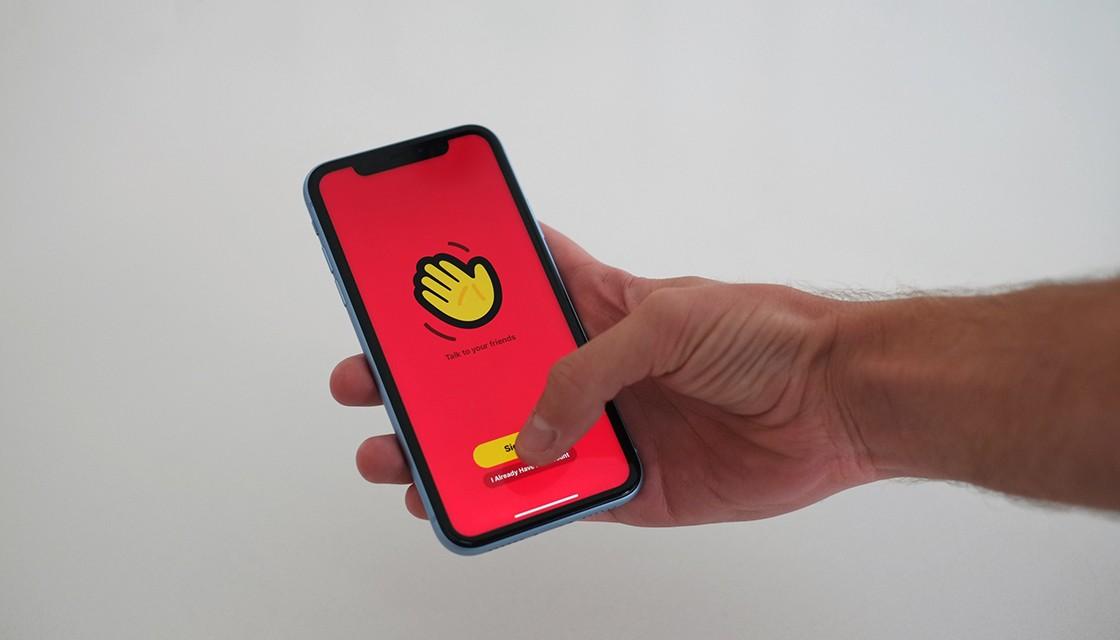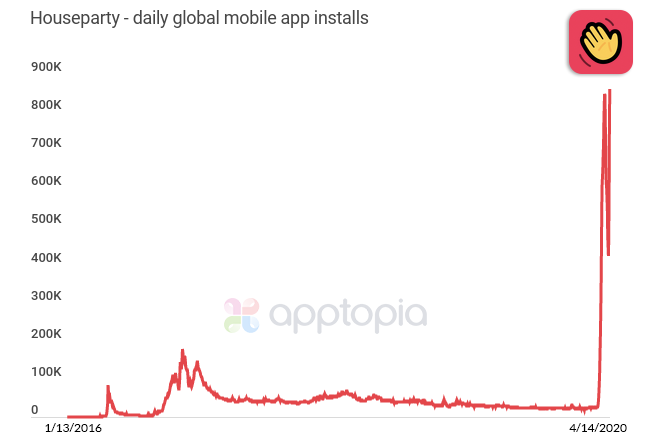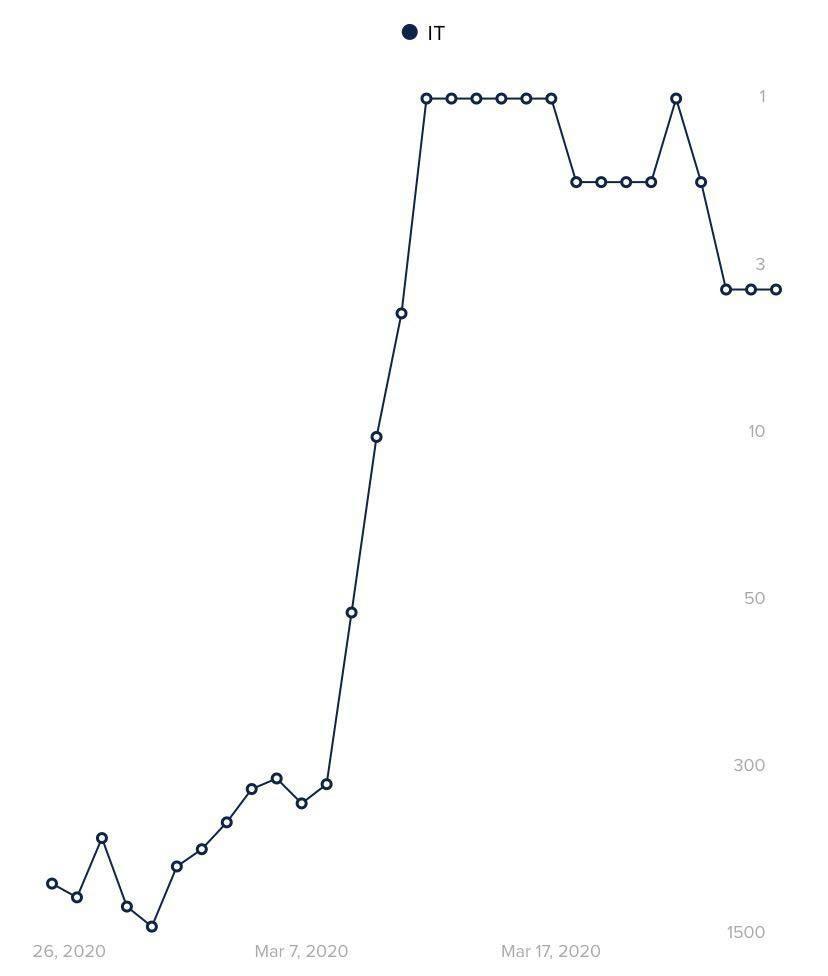“Zoom by Day, Houseparty by Night”

Social distancing orders resulting from the COVID-19 pandemic has left individuals isolated from friends and loved ones, resulting in increased demand for video chat apps. Houseparty has grown dramatically in response to the effects of the COVID-19 pandemic.
Introduction

Houseparty is a cross-platform mobile and desktop social networking app, which allows up to eight users to video chat simultaneously. The app was developed by Silicon Valley startup, Life on Air, Inc. in 2016 and raised $52 million in venture capital funding from top firms including Sequoia. At the time Houseparty was poised to be the next big social networking app. However, over the last few years, the app had drastically declined in popularity and success, with 2.3 million daily users in December 2016, which dropped to 1.1 million users in December 2018.
The recent COVID-19 pandemic has resulted in governments enforcing lockdowns and social distancing orders. The situation has left individuals isolated, keeping them from visiting friends and loved ones in person, resulting in increased consumer demand for video chat apps.
How does it work?
Houseparty’s user base mainly consists of teenagers and young adults (60% of users are younger than 24 years of age) and the company’s management was adamant that they did not want to adopt an advertising business model. However, since the app is free to use, the company had not been profitable. In 2019, Houseparty partnered with popular app, Heads Up! (a charades-like game) which was co-created by Ellen Degeneres and Warner Bros. Entertainment and was acquired by creators of Fortnite, Epic Games. This change led to the adoption of a freemium business model, relying on in-app purchases.

Users who play Heads Up! through Houseparty would be able to play the first three games for free before being charged $0.99 per game. The new model also includes other in-app purchases while the core group video chat features remain free.
Competition around group video chat is fierce. Apple’s Facetime and Facebook’s Bonfire both introduced group chat capabilities. However, Facetime requires all users to be using an iOS device, and Bonfire shut down after an early global test. How about professional platforms like Zoom, WebEx and Skype? While these are also very popular options and are the video conferencing systems of choice for working professionals and for scheduled meetings, they aren’t the best option for a casual chat among friends.
Houseparty is different— it can be described as a Facetime meets Zoom meets trivia-style app. Its cross-platform interface makes it a great alternative to Facetime for those who do not use iOS devices. Housepartyconnects to the user’s contact list and existing social networks. Opening the app indicates that you are available to talk and displays a list of friends who are also online, which allows for an immediate connection. A group chat is referred to as a “house” and if the “door” is left unlocked, friends of friends can enter the chat. This creates an element of spontaneity, which doesn’t require meeting IDs or scheduling like Zoom. Houseparty is not just a group chatting app, but a face to face social network. It offers a more organic way to communicate and the playful and informal approach resembles real life.
Growth during COVID-19 Pandemic

Houseparty has grown dramatically in response to the effects of the COVID-19 pandemic. In March 2020, there were a total of 17.2 million downloads, compared to 533,000 in February 2020 (an increase of 2902%). There was a 500% increase in the number of times the app was downloaded between the week commencing the 2nd of March to the 9th of March.

Houseparty’s revenues were $17,000 in February 2020, which increased to $155,000 in March 2020. However, partway through March, Epic Games announced that due to the pandemic, they would make add-ons free, so it is difficult to tell how much revenue Houseparty would generate if they continued to charge for in-app purchases during their meteoric rise, especially since half the users are playing the in-app games.

Houseparty is the sixth most downloaded overall app in the US while holding the number one spot in 16 countries including the UK, New Zealand, and Canada. To put things in perspective, Houseparty was ranked 1143rd on New Zealand’s Apple app store on the 17th of March, and six days later it skyrocketed to first place. Within the social category, the app is the number one app in 82 countries including the US. The average daily use time during the pandemic is 80+ minutes which has increased from 55 minutes.
Sustainability
While Houseparty has shown tremendous success and popularity during the COVID-19 pandemic, they must capitalize on the generated network effects in order to continue their success once the pandemic is over and we go back to our regular lives.
While the app’s user base expanded from its typical Generation-Z cohort to older users, the concern is whether the adult users will continue to use Houseparty once they are out of lockdown and returning to work and socializing in person.

We can use the example of Italy to forecast the future: as the rate of infections slow and lockdown measures are reduced, Houseparty’s popularity is also declining. The app held the number one spot in app stores in mid-March, whereas it has dropped to fourth in the current rankings.
If Houseparty’s product remains popular beyond the pandemic, there is also the threat of better-resourced competitors. While Facebook’s Bonfire previously failed in its attempt, other large entities can mimic Houseparty’s product— especially since the pandemic has shown how valuable technology is in connecting us.
Houseparty’s unique product is cross-platform (unlike Facetime) and is easy to use and informal (unlike Zoom) and has the added bonus of games and trivia. Houseparty must capitalize on this and continue to grow. Potential solutions are creating partnerships as it has done previously. For example, integration with Spotify or Netflix would allow for more group music listening or watching shows/movies together (like a real house party or social gathering). In addition to this, Epic Games could integrate with its other products, such as the very popular Fortnite. This could certainly help revenue generation due to cross-side network effects.
Whatever happens, Houseparty needs to show its users that even in the absence of social distancing, their product is essential and not easily replicated.
Sources
https://cheddar.com/media/houseparty-finally-has-a-plan-to-make-money
https://www.mobilemarketer.com/news/houseparty-seeks-to-monetize-video-chat-without-ads/547766/
https://mashable.com/article/houseparty-heads-up-game/
https://www.businessofapps.com/data/houseparty-statistics/#2
https://www.cnbc.com/2020/04/17/houseparty-ceo-sima-sistani-zoom-by-day-houseparty-by-night.html
https://onezero.medium.com/zoom-is-dead-long-live-houseparty-31106b371ebe



Thanks Partha!
When I started initially reading this, I had my doubts. Houseparty seems like just a casual version of zoom but limited to 8 guests. Judging by its performance before COVID, it did not seem promising at all. COVID, ironically, threw it a lifeline, but it seems very temporary and just a fad. I think it was very interesting how you analyzed Houseparty in Italy. This appears to be glaring evidence of the temporary nature of this product. The open invite piece (the main differentiator from other apps) is interesting. I like the fact that you can just meet up spontaneously without needing to invite or dial-in. This could be a terrifying concept if you left an ex on your call list. Hopefully, there are ways to customize who this open invite extends to. I also agree with your conclusion – they have to think quickly about layering onto the value proposition with other experiences like in-app games. Anything to make it sticky. I just fear nothing can be done that Facebook cannot replicate rapidly. Great piece!
Hi Nicholas. Thanks for reading and for your kind words. Yes, unfortunately, I don’t think Houseparty has what it takes to last once COVID has subsided. And yes, leaving the door unlocked can be a terrifying concept. However, I believe you can lock the door so that nobody else can enter, but the user needs how to do this first. Thanks again!
Any hypotheses as to why some of the “legacy” players (e.g., FaceTime, Zoom, Skype) haven’t integrated more HouseParty-esque features?
On one hand I could see it being too difficult to accomplish, especially as they all scramble to address more fundamental issues such as security; on the other, it’s just truly shocking to me that we haven’t seen even a little bit of innovation to make these tools more group-socialization friendly when it seems so obviously proven!
I suppose with Facetime, it embedded software within all iOS products so it doesn’t generate its own profits so simplicity is probably best. With regards to Zoom and Skype, they are professional platforms by default, so I suppose using the spontaneous and informal features of Houseparty may put off the target market. Perhaps added features and add ons wouldn’t be a bad idea.
Very interesting post! I am curious about the potential solution of partnerships and what specifically would be most important in picking such a partner. Specifically, would you be looking for an app with similar demographics as you (to keep your customers on the platform)? Or would you be looking more for a widely used app so there’s potentially just more volume coming to your app? Or is perhaps a smaller company partnership the way to go in order to have more “homegrown” apps and making the value proposition more unique?
I think the problem Houseparty will face is if it can maintain their user base it has accumulated during the pandemic, once the social distancing orders subside, and I think they must offer products beyond video chatting that differentiates itself from competitors. Epic Games owns Fortnite which is hugely popular and I think it would be wise to integrate live streaming of gaming, which is already popular on several platforms like Twitch. Alternatively, partnerships with music and video streaming services could facilitate group listening through Spotify or Netflix watch parties, which could diversify revenue streams. However, these are just my opinions.
Great article. To sustain future growth how would you suggest the Houseparty engage older users (who say are only just beginning to get comfortable with apps like Zoom). Also can you elaborate on why work related competitors like Zoom, WebEx and Skype aren’t appropriate for casual chats (and vice versa?). Finally, how would you recommend Houseparty best monetize their offering in the future?
Hi Brian,
Thankyou for reading my post and for your kind words. I think one advantage that Houseparty has over Zoom is that the video chat is completely free. Zoom’s free service caps at 40 minutes with subscription fees for longer chats. This is significant since the average time people spend per day on Houseparty is 80+ minutes. I don’t think the gaming aspect is as attractive to the older generations, but they could add other partnerships that may appeal to them such as with dating apps (certainly during the pandemic). I think Zoom, WebEx and Skype can be appropriate for a casual chat, but I don’t think they necessarily mimic real life’s spontaneity. For example, the need to have meeting ID’s and dial in numbers are not always reflective of a spontaneous get-together which is closely resembled by Houseparty’s functionality. Very good point about how Houseparty could try and enter the professional space. Honestly I don’t think they could compete since their gaming add-ons would not be an appropriate revenue model in the work place. Perhaps they could add an enterprise subscription model.
Thank you for sharing, Partha! It is interesting to see how recent marginal changes in lockdown measures have directly impacted Houseparty’s numbers so soon. I have only tried the app a couple times and can’t claim to be an experienced user, but it seemed to me that the games are fairly rudimentary and have a limited half-life. Given that it appears to lack a clear defensible moat, I feel that its success over the long term will be highly dependent on whether it can build a “killer app” type of game that is high quality, viral, and sticky. I don’t believe they are there yet, but it will be interesting to see whether they can accomplish this as an in-house project or via partnership.
I would relay on a subscription base monetization strategy in the future, I believe the success of this app is anchored in how much time you spend on it and how useful it is for you to connect with people. I agree that spontaneity is a key element, therefore, features like calling in people to join in or challenging an extra player for a game would are good ways of triggering additional network effects.
I agree with you, Partha, that the biggest challenge will come after Covid-19, when people are going to be eager for in-person meetings and this will displace for a while, so remaining essential will be their biggest challenge and partnering with other ludic apps like Spotify or Netflix could add extraordinary value proposition.